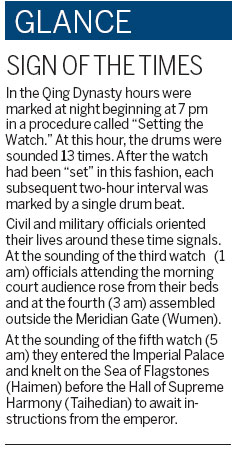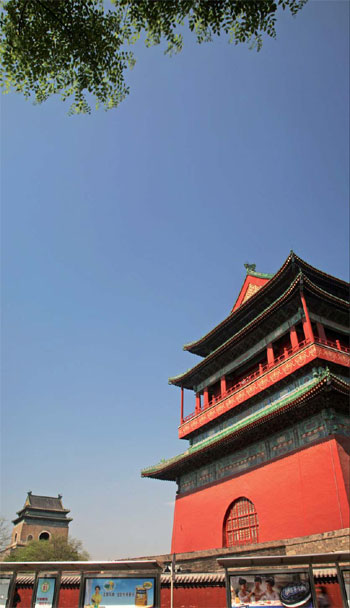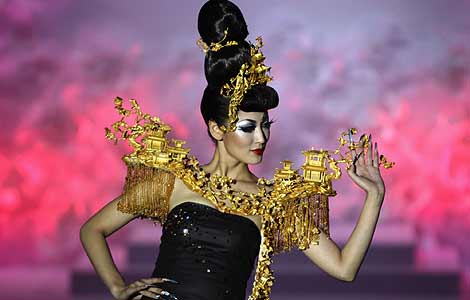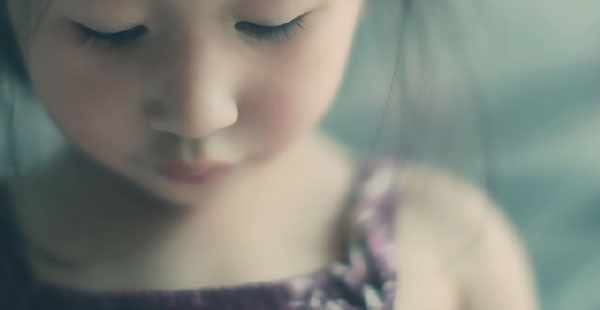Ringing true
Updated: 2011-10-28 09:27
By Yin Yin (China Daily)
|
|||||||||
'Ihave been hearing the familiar bell tone on New Year's Day and during the Spring Festival for many years," says Li Xinhua, a 78-year-old native Beijing woman who has lived in a traditional siheyuan (courtyard home) near her city's famous Bell and Drum towers for a very long time.
|
The Drum (right) and Bell Towers are well-known Beijing landmarks. Zhang Kaixin / For China Daily |
Every day the elderly lady hears the sound of drums and bells played for tourists and over the centuries, the sounds coming from Beijing's Bell and Drum towers have echoed through the streets and the hutong.
This type of big public clock was a common site in northern Chinese cities, such as Xi'an, in Shaanxi province, Yinchuan in Ningxia Hui autonomous region and Jiuquan in Gansu province.
"The morning bell and dusk drum" is a Chinese proverb, which means that during ancient times local officials would open the city gates at the toll of the bell early in the morning and close them with the strike of the drum in the evening.
There have been many ways the Chinese have kept time throughout the ages. Water clocks, sandglasses, candle clocks and sundials were used but bell and drum towers were the most public.
Since the Western Han Dynasty (206 BC-AD 24), bell and drum towers played a very important role in helping people measure time and when it comes to the national standout, the Bell and Drum towers, of Beijing are the largest and highest.
Situated on the north-south axis in Dongcheng district, one of the ancient inner city areas, the Beijing Bell and Drum towers are prominent buildings and are symbols of this grand old city.
They were first built in 1272, during the reign of Kublai Khan in the Yuan Dynasty (1271-1368), and at that time were known as the Tower of Orderly Administration (Qizhenglou).
They was rebuilt twice after fire decimated the structures and continued as the time-telling centers during the Ming Dynasty (1368-1644) and Qing Dynasty (1644-1911).
 |
"There were 25 drums in the second story of the Drum Tower. The biggest one stands for the whole year and the 24 small group of drums indicate the traditional Chinese solar terms. But only the biggest one survives," says Zuo Yanjie, who works at the Beijing Drum and Bell tower museum.
In ancient days, the Drum Tower was equipped with "water clocks" and drums were beaten to mark the hours.
"The way of beating the drum was to beat it quickly 18 times and then slowly again for 18 times. All together there are three rounds, which total 108, a lucky number.
The Bell Tower originally housed a huge iron bell. But because its tolling was not loud enough, this was replaced by a massive cast bronze bell that is more than 25 cm thick and is in perfect condition today. The iron bell was moved to the back of the Drum Tower where it has remained for more than 500 years. As recently as 1924, the bronze bell could be heard ringing out the 7 pm chime from more than 20 kilometers away.
Today tourists can see a special daily re-enactment of the ancient ceremony.
Visitors can also climb up into the towers to catch a birds-eye view of the entire district, which has become a popular shopping area.
According to the Beijing Dongcheng District Development Planning Strategy (2011-2030), the government plans to continue beautifying the surrounding areas.
British tourist Arthur Smith says Beijing's Bell and Drum Towers are amazing.
"They are as gorgeous as Big Ben in London and are what I had expected of Chinese classical architecture. I have never seen such buildings before."












